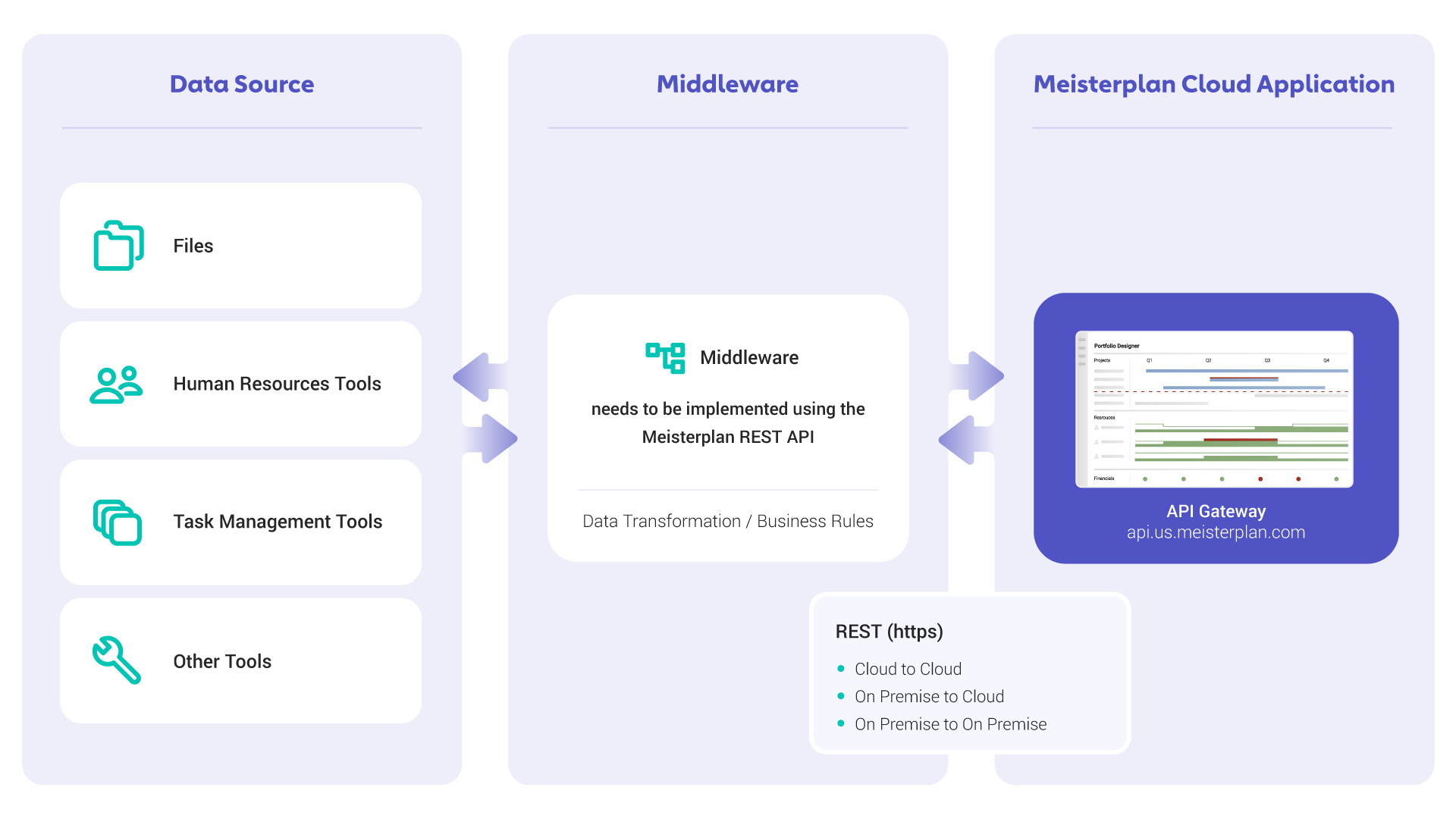Data Quality: The Key to Successful PPM
Comprehensive project data maintenance is a real headache for many organizations. You’ve probably experienced firsthand the frustration of irregular and inadequate data maintenance when relevant information is missing.
Just as frequently, translation between tools or the transition from traditional to Agile working methods fails. What initially seems like a minor problem can grow into a black hole of ever-deteriorating data quality. Escaping this, and its consequences, is difficult.
Once you’re caught in this vortex, you’ll easily be dragged into the depths. If project data isn’t up-to-date, decisions can no longer be made based on valid data, and user acceptance of your PPM tool declines. High data maintenance costs, inappropriate processes, and a lack of incentives for participation all make it difficult to break out of this vicious cycle.
To break the cycle, it’s helpful to build data quality on the pillars of automation, process, and decentralization.
Better Data Quality Through Automation
In our experience, high expectations for automation often clash with practical implementation. Teams usually crave a simple solution. However, this can fall flat due to the lack of a conceptual framework. This results in various tools being either randomly connected and data being aggregated without rhyme or reason, or a connection not being established at all. Alternatively, the task of automation is increasingly being delegated to the IT department, which now has to deal with the regulation and definition of new interfaces on top of their own projects.
Automation vs. Partial Automation
Partial automation is a pragmatic solution for reducing effort. Subprocesses can be digitalized across various systems, and data can be imported or exported directly into the PPM software via a connection point. This is called middleware. With its easy-to-use programming language, middleware offers the advantages of enabling seamless communication between PPM software (feel free to try Meisterplan!) and third-party systems with minimal manual effort. The process of partial automation subjects the input factors to an additional level of control.
In contrast to fully automated data transfer, partial automation also offers the advantage that not all data needs to be transferred, but rather only relevant data. For example, the desired data can be exchanged between a task management or HR tool and the PPM software.

Business Intelligence (BI) reporting can also help process important company data to be used as a basis for PPM decisions. However, many small and medium-sized companies only focus on automation to a limited extent. In these cases, it may be beneficial to start PPM in a more lean and manual way, allowing for gradual expansion and automation later on.
Obstacles & Tips – What Our Customers Are Saying
We regularly encounter vast amounts of information stranded on software islands. It’s clear that merging this mess creates even more chaos. Anyone striving for successful automation in PPM should first identify the existing weak points and consider how best to address them. But don’t worry – with your interest in this article, you’ve already taken the first step.
Now you may be faced with the challenge of merging decentralized data and further expanding your PPM maturity. Based on our customers’ experience, suitable middleware is essential for merging necessary PPM process information from all relevant systems. For example, the low-code platform Zapier can be used to transfer absences from an HR system. Another example of implementing integrations is the Power Automate connector, which can be used to automate recurring work steps between third-party systems and your PPM tool to avoid duplicate data maintenance.
Better Data Quality Through Processes
Seamless data transfer and the availability of a clever software solution as the source of truth are not enough to ensure data quality. A key component of the successful foundation for data quality in PPM is a suitable process. This process should provide the organization with a flexible framework for action.
This means that the process should:
- Have a clear guideline
- Focus only on the most important information
- Represent the organization
- Take established boards and decision-makers into account
When planning individual projects, an excessive number of projects under consideration and an unnecessary level of detail often prove to be a roadblock. Instead, rolling planning with a clear focus on currently relevant projects should be used. In this case, rolling means that new initiatives and existing projects are regularly compared and evaluated. This ensures that the most important projects receive the highest priority at all times, and the planning intensity is adjusted according to their importance to prevent overload.
Obstacles & Tips – What Our Customers Are Saying
“I don’t have time for planning.” Or “My team is overloaded.”
These quotes and similar sentiments have the rare ability to evoke mixed feelings in us. On the one hand, we feel bad for anyone who’s burdened with countless tasks and booked well over their available capacity. On the other hand, we feel annoyed because the lack of resource planning and availability jeopardizes cross-departmental project coordination. So, what can we do to keep things from getting worse?
Our customers recommend first ensuring that the necessary competencies are in place. This means that a PPM process can only succeed if those responsible are able to set common and individual goals in order to…
- Communicate everything clearly
- Design individual process steps
- Coordinate the steps collectively
Decisions should not be made based on gut feelings, but rather on clear rules. Good communication and joint coordination are essential for successful process planning.
Nevertheless, our clients also recommend granting those responsible a certain amount of freedom to maintain motivation and participation throughout the process. In concrete terms, this means that a structured PPM process should be presented less as a “must” and more as a kind of “service” that makes things easier for everyone involved.
Better Data Quality Through Decentralization
You’ve probably heard the term “change management” before. Do you know what it means in practice? “Change” seems straightforward enough. But in which direction should you change? What should the focus be? And how do you convince an entire company to change course? When a new direction is established, it often isn’t communicated to the entire team. It’s then unclear who should take the lead and when.
Decision-makers can hardly be blamed for this, as they are confronted with countless new management methods and strategic models every day. Finding the right course of action in this ocean of possibilities is a Herculean task. To avoid having to bear this burden alone, it makes sense to involve project and resource managers directly in PPM.
Decentralization is the key word here. To ensure that everyone involved performs their duties, tasks should be clearly assigned, and individual incentives should be defined in advance. It is also advisable to involve portfolio managers to ensure smooth navigation even through turbulent times. These individual guides act as a kind of change beacon, ensuring clear communication of the course of action at all times, actively driving change, and motivating everyone to implement it together.
Obstacles & Tips – What Our Customers Are Saying
According to our survey, silo mentality and rigid policies hamper the successful implementation of change. Why change what has (more or less) worked so far?! Resistance to the new and unknown leads to endless discussions, grueling negotiations, or widespread misunderstandings.
For decentralization to be established, a clear ambassador is essential – someone who makes the benefits tangible for all involved and supports the joint drive for change. There will only be a drive to actively contribute to problem solving and an intact PPM process when every link can see the benefits for themselves.
At this point, our clients’ experience shows that PPM coaching, for example, is helpful in identifying individual benefits for all participants. Put yourself in the shoes of your counterpart: Why should this person be involved in PPM? A clear answer to this question creates motivation and brings the topic of data maintenance directly to the attention of each individual. In summary, awareness and incentive ultimately ensure that data quality is actively maintained in PPM.
If you don’t already have a process that allows you to work in a lean and decentralized manner, you’re welcome to use our Lean PPM Framework as a guide.
Conclusion
Ensuring data quality is not an easy task, but it is not impossible either. Overcome this vicious cycle by skillfully combining automation, processes, and decentralization based on your organization’s needs. Choose partial automation based on the data required and create a concrete structure for selecting and handling decision-relevant information. Data quality must be maintained regularly to see the long-term benefits. Clearly emphasize the benefits for every employee and use recognized leaders as pioneers to sustainably integrate data quality into your company.



